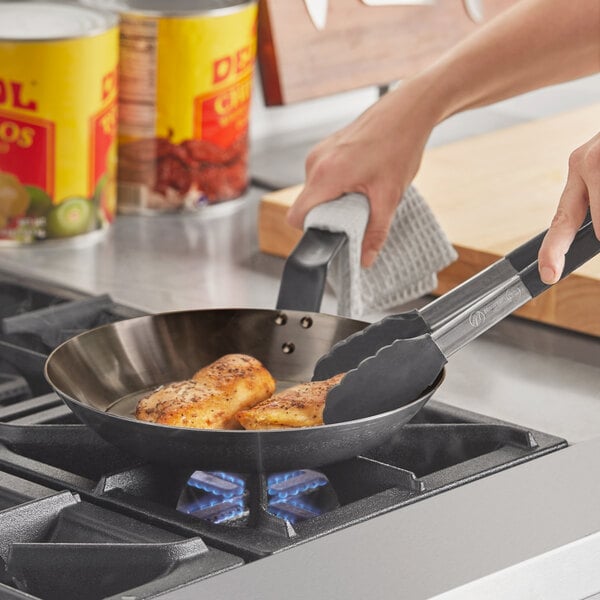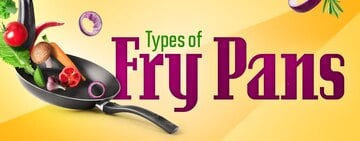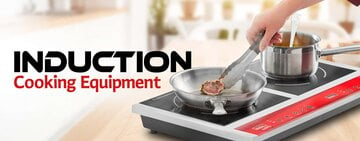When choosing the right type of cookware for your kitchen, the debate between carbon steel and cast iron often comes into play. Both have their place in the kitchen, so the question arises: is one better than the other? The short answer is no - the choice is mainly one of preference, but figuring out your cooking goals can help narrow down your options. Read on to learn the differences and similarities between the two materials to decide which is best suited for your cooking needs.
What Is Carbon Steel Cookware?

Carbon steel cookware is made from a combination of iron and carbon, giving it a sturdy and heat-responsive construction. Despite its name, carbon steel has a lower percentage of carbon than cast iron. It must have less than 2% carbon to be classified as steel. The cookware is stamped from a thin sheet of the alloy, with the handles typically being attached separately to the main body of the pan.
Carbon steel is light weight yet incredibly durable and can withstand high heat levels. It is highly responsive to heat changes and is ideal for quick-cooking dishes over high heat. From stovetop to oven to grill, carbon steel pans can handle a variety of cooking methods with ease. Carbon steel pans are particularly well-suited to pan-frying and sauteing, so many feature sloped sides and long handles to toss foods with ease. They are also naturally nonstick when properly seasoned, making cleanup a breeze.
- Carbon steel cooking methods: Sauteing, frying, grilling, searing, broiling
- Cast iron cookware types: Fry pans, woks, paella pans, griddles
Carbon Steel vs Cast Iron Video
Check out a detailed video comparison describing the differences between cast iron and carbon steel:
What Is Cast Iron Cookware?

Like carbon steel, cast iron cookware is also made from a combination of iron and carbon. However, cast iron has a higher carbon content, ranging from 2-3.5%. The cookware is made by pouring the molten alloy into a mold, which is then allowed to cool and solidify. This process creates a durable one-piece cooking vessel that can withstand high temperatures and maintain consistent heat distribution.
One of the standout features of cast iron cookware is its ability to retain heat. Once heated, cast iron holds onto that heat, ensuring even cooking and perfect searing. This makes cooking with cast iron ideal for dishes that require a consistent temperature, such as baking cornbread or carmelizing onions. The rough surface of cast iron also develops a natural non-stick patina over time when regularly seasoned. With proper care and maintenance, a cast iron skillet or Dutch oven can last for generations, making it a worthwhile investment for any kitchen.
Cast iron can come either pre-seasoned or with an enamel coating. Pre-seasoned cast iron cookware features a layer of oil, applied by the manufacturer, that has been baked onto the cookware's surface to create a natural non-stick coating. Pre-seasoned cast iron is ready to use right away, making it a convenient option for busy commercial kitchens. Enamel-coated cast iron features a layer of ceramic porcelain enamel on the cooking surface. This enamel coating provides a smooth, non-porous surface that is easy to clean and maintain. Enamel-coated cast iron also comes in a variety of colors, adding a pop of style to your kitchen while still offering the durability and heat retention properties of traditional cast iron.
- Cast iron cooking methods: Searing, frying, grilling, braising, simmering, roasting, baking, sauteing, stewing, broiling
- Cast iron cookware types: Skillets, Dutch ovens, casserole dishes, griddles, grill pans, fajita skillets, and fondue pots
Differences Between Carbon Steel and Cast Iron
The difference between carbon steel and cast iron is in their weight, ease of handling, and heat responsiveness, with carbon steel coming out on top. They are lighter than cast iron skillets, making them more manageable over the stovetop. If the items you're cooking require the pan to adjust to temperature changes quickly, such as eggs or fish, carbon steel is the better choice. On the other hand, cast iron skillets excel in heat retention. Once hot, they hold onto that heat well, ensuring even cooking throughout your dishes. This makes cast iron ideal for cooking items that require consistent and intense heat, like searing steaks to perfection or baking cornbread with a crispy crust. We’ve broken down the distinctions between these two popular options below:

- Weight: Carbon steel pans are lighter and thinner than cast iron, making them easier to handle and maneuver. This is especially advantageous for tossing sauteed foods and why so many professional chefs turn to carbon steel when purchasing woks for stir-fries.
- Conductivity: Carbon steel is highly responsive to changes in temperature, heating up and cooling down more quickly than cast iron. This quality makes carbon steel ideal for tasks requiring quick, even heat adjustments, such as flash frying, sauteing, searing, and open-flame cooking.
- Heat Retention: Cast iron takes longer than carbon steel to heat up, but once it's hot, it stays hot. This makes it ideal for pan-roasting, stove-to-oven cooking, and reverse searing.
- Surface: Because they are made from a stamped sheet of thin metal, carbon steel has a smooth surface that can offer some benefits compared to cast iron. The smooth surface allows for better food release, making it easier to flip and turn ingredients while cooking. This is especially beneficial when preparing delicate items like omelets. Additionally, they can be slightly easier to clean. Food particles are less likely to stick to the surface, reducing the amount of scrubbing needed after cooking. On the other hand, cast iron's rough surface makes it easier for seasoning to adhere to.
- Porosity: Cast iron is more porous than carbon steel. The porous surface of cast iron allows it to absorb and retain flavors over time, making it ideal for dishes that benefit from seasoning and developing a rich, deep flavor profile. This makes cast iron a popular choice for dishes like stews, braises, and casseroles where the cookware itself can enhance the taste of the food. Carbon steel’s smooth surface is less porous, which can make it slightly easier to clean, but it also means its seasoning can be stripped easier, especially if cooking with acidic foods.
- Handle Length: Because they are better suited for pan-frying, carbon steel pans typically have longer handles than cast iron skillets for easier lifting.
- Available Cookware Types: While carbon steel is primarily used to make fry pans and woks, cast iron is available in skillet pans, griddles, Dutch ovens, and a variety of other cookware types for increased versatility.
Ultimately, you’ll need to consider what dishes you'll cook when deciding between a carbon steel or cast iron skillet. While both handle high-heat cooking exceptionally well, each material is better suited to specific cooking techniques.
Similarities Between Carbon Steel and Cast Iron
Carbon steel and cast iron are both known for their durability, longevity, and versatility. They can withstand heavy use in a busy kitchen without showing signs of wear and tear, making them reliable options for everyday cooking tasks. Whether you're searing meats, frying vegetables, or flipping pancakes, these materials can handle the heat and deliver consistent results. Let's explore the commonalities between carbon steel and cast iron below.

- High Heat Tolerance: Both materials can handle the intense heat required for frying, searing, and sauteing. Carbon steel heats up and cools down quickly, while cast iron retains heat more effectively and distributes it evenly over a longer period of time.
- Durable: Both cast iron and carbon steel are incredibly durable and can last a lifetime when they are properly cared for.
- Versatile: Cast iron and carbon steel can be used for a wide range of cooking techniques and recipes. From stovetop to oven to grill, these cookware types can handle it all. While many chefs prefer cooking steak in a cast iron pan, some swear by carbon steel. Which material you choose will mostly come down to preference in weight and conductivity.
- Naturally Non-Stick: When properly seasoned, cast iron and carbon steel develop a natural non-stick surface that gets better with each use, making it a healthier alternative to chemical-coated pans.
- Require Seasoning: Both materials need to be regularly seasoned with a layer of oil to develop and maintain their non-stick surface and protect them from rusting. Many carbon steel and cast iron pans now come pre-seasoned, allowing you to use them right away.
- Easy to Clean: The cleaning process for cast iron and carbon steel is exactly the same. Both should be cleaned with warm water, avoiding harsh chemicals that can damage the seasoning, dried, and coated with a light layer of oil. Both materials are prone to rusting if not properly cared for. Ensuring they are thoroughly dried after cleaning and storing them in a dry place can help prevent rust formation.
- Compatible with Induction Cooktops: Many carbon steel and cast iron cookware pieces are compatible with induction cooktops due to their magnetic properties. However, always check the manufacturer's guidelines to ensure compatibility with your specific cooktop.
- Reactive: Cast iron and carbon steel are reactive metals, which means they can interact with acidic foods, such as vinegar, lemons, and tomatoes, and potentially alter the taste of your dishes. To avoid any unwanted reactions, it's best to steer clear of cooking acidic foods in these types of cookware and opt for non-reactive alternatives like stainless steel.
Cast Iron vs Carbon Steel vs Stainless Steel Pans
If you’re looking to add all three types of cookware or choose between the three, here is a quick rundown on when to choose each.
- Cast iron’s heat retention is unparalleled, so if you’re doing a lot of low-and-slow cooking or searing meats, then cast iron is your best choice.
- Carbon steel heats up much quicker than cast iron and stainless steel and has a non-stick release, making it the best option for cooking delicate items at a high heat.
- Opt for stainless steel pans when cooking acidic foods since they are nonreactive and corrosion-resistant. Carbon steel and cast iron are both reactive metals and acidic foods can strip their seasoning, which will cause them to corrode and rust.
There's no right or wrong answer when deciding between a carbon steel or cast iron skillet. Both offer long-lasting durability and versatility in the kitchen. Whether you're drawn to the sleekness of carbon steel or the traditional appeal of cast iron, investing in high-quality cookware is half the magic of creating extraordinary dishes.



